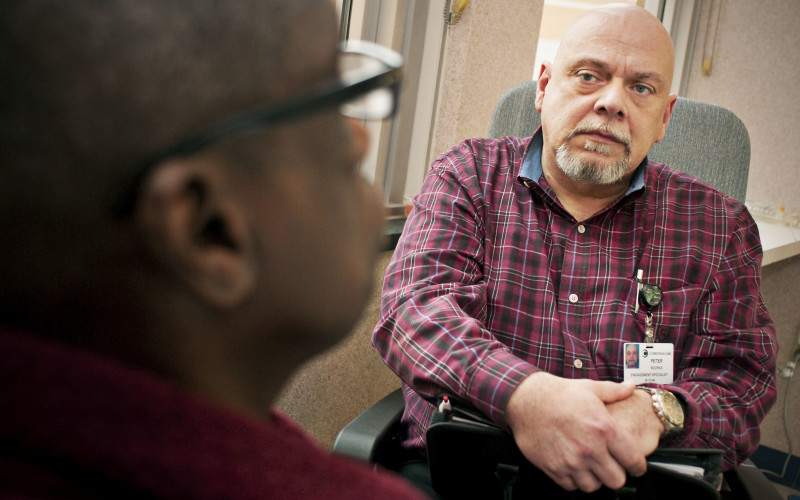Innovative substance abuse program Project Engage reaches 1,000-patient milestone

More than 1,000 patients have been touched through Project Engage, a rapidly expanding program that saves lives and money by engaging people with substance abuse problems at the hospital bedside and linking them with resources in the community that can put them on the path to wellness.
“Many of these patients cycle repeatedly in and out of the hospital or the Emergency Department,” says Terry Horton, M.D., chief of Christiana Care’s Division of Addiction Medicine and medical director for Project Engage. “We are encouraged by the success we have had in both reducing patient’s suffering, as well as their health care costs.”
Early data from Project Engage was published in a September issue of Addiction Science & Clinical Practice, authored by Dr. Horton and other researchers from Christiana Care, University of Pennsylvania, Delaware Physicians Care Inc. and Brandywine Counseling and Community Services.
In the program, engagement specialists counsel patients and encourage them to go directly into treatment when they leave the hospital. Their mission is to remove barriers to care by arranging for placement in treatment programs, as well as such basic needs as food, clothing and shelter.
“If they need a ride to treatment, we will give them a bus pass — or drive them there,” Dr. Horton says.
So far, results are encouraging.
“About 30 percent of the people we see are willing to follow through with treatment,” says Bev Wilson, program manager.
About 600 patients were engaged in the last year alone. To meet demand, the program will add three engagement specialists in early 2013. They will focus on patients in the Emergency Departments at Christiana and Wilmington hospitals.
Project Engage also offers an opportunity to gather data that will give researchers a better understanding of addiction. Of the patients engaged in 2008 – 2010, two-thirds are male; about half are white. The average age is 46. More than half — 58 percent — abused alcohol, followed by crack cocaine at 22 percent.
In 2009, patients who received treatment for substance abuse recorded 33 percent fewer hospitalizations and 38 percent fewer Emergency Department visits. In 2010, hospitalizations were down 38 percent and Emergency Department visits declined 12.7 percent.
Future data will help to delineate health care costs that result from not addressing addiction.
“There is cost associated with inaction,” Wilson says. “We believe that providing appropriate care can save money.”